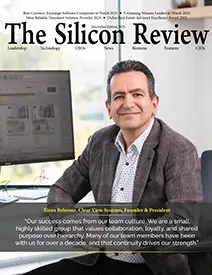>>
Industry>>
Lifestyle and fashion>>
Qatar Shifts Tourism Strategy ...Qatar Shifts Tourism Strategy to Attract High-Spending, Long-Stay Travelers
The Silicon Review
23 May, 2025
In a bold pivot, Qatar is refocusing its tourism blueprint to draw in fewer, longer-staying visitors who spend significantly more—reshaping its position in the Gulf’s luxury travel landscape.
Qatar is changing the way it does tourism. After spending $220 billion to upgrade its infrastructure following the World Cup, the country is moving away from trying to attract as many visitors as possible. Instead, it’s focusing on travelers who stay longer, spend more, and look for premium experiences. According to Qatar Tourism, the goal is to bring in people with higher incomes who want more than just a quick trip—they want culture, comfort, and quality. This shift is part of Qatar’s bigger plan, called Vision 2030, which aims to grow its economy and boost tourism’s share of the country’s GDP beyond the current 7%.
Qatar is taking a different path from other Gulf countries when it comes to tourism. While others focus on bringing in large crowds, Qatar is betting big on luxury. The country is expanding its lineup of high-end hotels, upscale shopping, and carefully planned cultural events. To support this shift, Qatar has teamed up with global hotel brands to turn its coastline into a series of boutique resort spots. It’s also made it easier for travelers to get in and out with smoother visa processes and better transportation between the airport and the city. Experts say Qatar’s “quality over quantity” strategy could help the country in a big way. By focusing on fewer, high-value visitors, Qatar has a better chance of building lasting loyalty with tourists who come back again and again. It also helps protect the country’s historic and cultural sites from being overwhelmed by crowds. And in a region full of fast-paced, high-traffic destinations like Dubai, this slower, more premium approach makes Qatar stand out.
Qatar’s new tourism plan is a wake-up call for businesses in luxury travel, hotel tech, and experience-based marketing. If you work in this space, now’s the time to pivot. Today’s travelers expect more than just a place to stay—they want personalized service and smooth digital experiences that make their trip easier and more enjoyable. This change means companies should look at new ways to connect with guests. Think AI-powered concierges, or smart tools that can learn and predict what long-stay visitors want. For business leaders, the message is simple: the future of tourism isn’t about packing in more people. It’s about giving fewer guests richer experiences, longer stays, and more reasons to spend.
_2025-12-15_12-44-58.webp)


_2025-11-17_06-38-14.webp)

 (1)_2025-10-21_13-35-14.webp)
